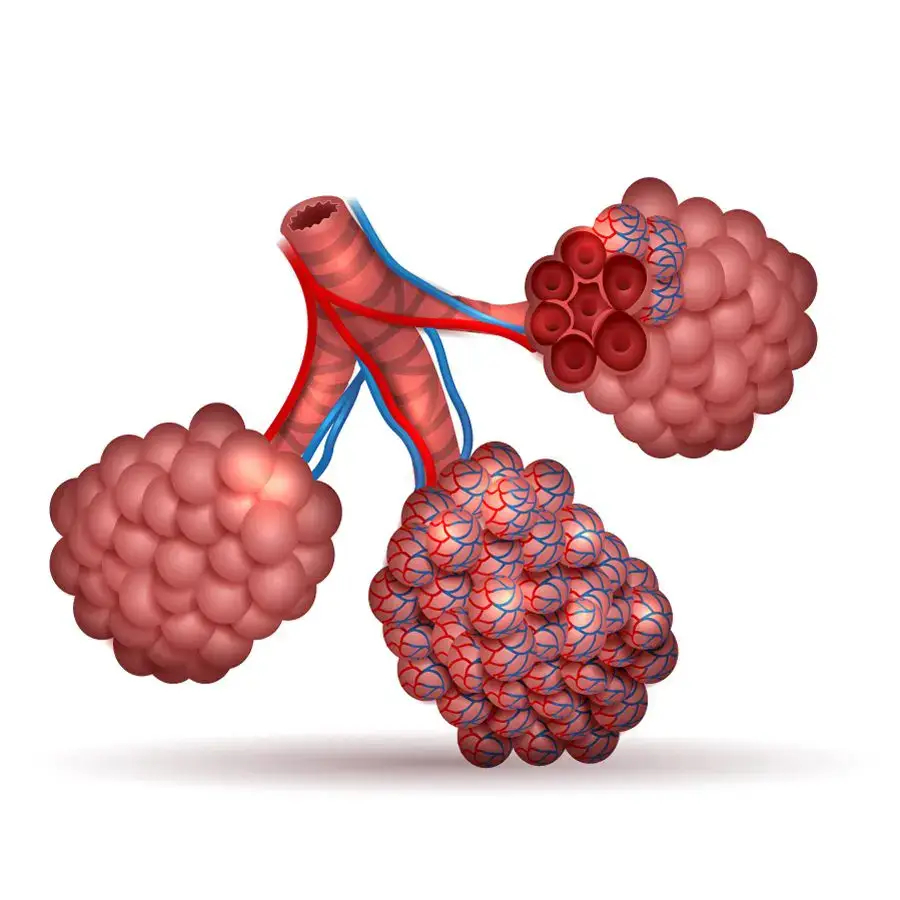Home > CPAP
CPAP
CPAP
What is CPAP?
“Continuous positive airway pressure (CPAP) is a type of positive airway pressure that is used to deliver a set pressure to the airways that is maintained throughout the respiratory cycle, during both inspiration and expiration.” [1] To keep the pressure constant in the breathing circuit, the flow rate should be at least equal to the patient’s peak inspiratory flow demand. This helps achieve Positive End Expiratory Pressure (PEEP). PEEP is achieved at the end of the expiratory breath by stenting the airways open enabling the lungs to remain inflated therefore stopping the collapse of the alveoli and maintaining sufficient air in the lungs.

Maintaining PEEP
Positive End Expiratory Pressure (PEEP) is used to maintain pressure on the lower airways at the end of the breathing cycle which prevents the alveoli from collapsing during expiration.

Increasing the surface area of the alveoli
The greater the surface area, the more gas exchange can occur therefore increasing the amount of oxygen in the blood.

Improving oxygenation
By forcing the alveoli open and pushing oxygen across the alveolar membrane.
Frequently Asked Questions
What are possible side effects of CPAP?
Dual Therapy Flow Driver - CPAP & HFOT
AquaVENT® heated and humidified breathing circuits can be customised for both CPAP or High Flow, helping reduce clinical waste and streamline delivery of care.
References
[1] Pinto, Venessa L., and Sandeep Sharma. “Continuous positive airway pressure.” StatPearls [Internet]. StatPearls Publishing, 2021.

Solutions to fit various CPAP delivery methods
Our circuits come with adapters that can fit a wide variety of CPAP drivers and ventilators. If you want to double check please get in contact with the details of what equipment you use and we can let you know if we are compatible.

Antimicrobial Protection
Our NeoFlow® circuits are 7-day single patient use.

Reduced waste/sustainability
Our circuitry solutions ensure you have ‘everything you need but only what you need’ to reduce unwanted and unnecessary plastic and packaging.
Frequently Asked Questions
Will the NeoFlow® CPAP circuits fit with the equipment in my NICU?
How long can we use these circuits for?
Our NeoFlow® circuits are 7-day single patient use.
Is the addition of BioCote® dangerous for my neonatal patient?
BioCote® is an ingredient that we add during the manufacturing process, this makes it integral to the structure of the product so it cannot become displaced or harm the baby in any way.
nCPAP Bonnet & Generator Fitting
Carefully designed and manufactured our NeoFlow® nHFOT and nCPAP systems are easy to use. They get to the prescribed therapy quickly and maintain it consistently allowing you to concentrate on the patient.
References
[1] Franklin, Donna, et al. “Effect of Early High-Flow Nasal Oxygen vs Standard Oxygen Therapy on Length of Hospital Stay in Hospitalized Children With Acute Hypoxemic Respiratory Failure: The PARIS-2 Randomized Clinical Trial.” JAMA 329.3 (2023): 224-234.
[2] Richards-Belle, Alvin et al. “FIRST-line support for assistance in breathing in children (FIRST-ABC): a master protocol of two randomised trials to evaluate the non-inferiority of high-flow nasal cannula (HFNC) versus continuous positive airway pressure (CPAP) for non-invasive respiratory support in paediatric critical care.” BMJ open vol. 10,8 e038002. 4 Aug. 2020, doi:10.1136/bmjopen-2020-038002
Get in touch
We are committed to protecting and preserving the privacy of our visitors when visiting our site or communicating electronically with us.





